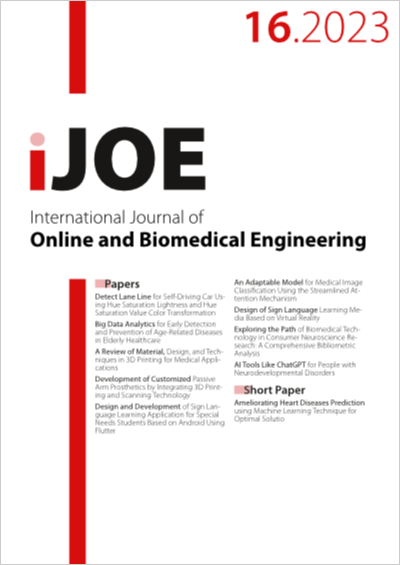Development of Customized Passive Arm Prosthetics by Integrating 3D Printing and Scanning Technology
DOI:
https://doi.org/10.3991/ijoe.v19i16.43189Keywords:
shoulder disarticulation, passive arm prosthesis, mmedical engineering design, 3D printing, 3D scanningAbstract
Severe hand injuries resulting from accidents can lead to the traumatic loss of an upper limb. The provision of an assistive device, such as an arm prosthesis, can help patients regain their courage and motivation to engage with the public. This project aimed to integrate 3D scanning and printing technology to develop a customized passive arm prosthesis for individuals who have experienced shoulder disarticulation due to a traumatic accident. The fabrication of the arm prosthesis was specifically designed and tailored to meet each patient’s unique needs and preferences. The prosthesis design was created based on 3D scan files obtained from the patients. Finite element analysis was employed to analyze the design and determine the optimal materials to use, as well as to optimize the overall design. The finalized model was then converted into STL file format and G-code for the 3D printing process. To ensure ease of use, the entire arm prosthesis and a harness system were assembled, and multiple tests and fittings were conducted on the patient. Several prototypes of the arm prosthesis were fabricated to achieve the best fit for each individual patient.
Downloads
Published
How to Cite
Issue
Section
License
Copyright (c) 2023 Dr. Abdul Halim Abdullah, Muhammad Firas Zulkifli, Dr. Natiara Mohamad Hashim, Dr. Muhammad Hanif Ramlee, Dr Yudan Whulanza

This work is licensed under a Creative Commons Attribution 4.0 International License.



